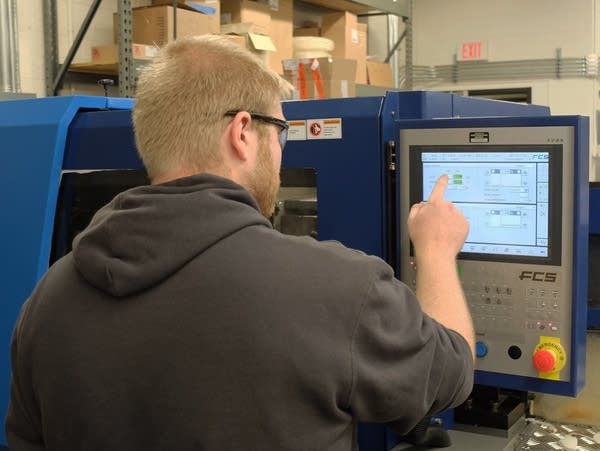Fargo scientists search for next generation of plant-based plastics

NDSU graduate student Joseph Fehrenbach from Silver Lake, Minn., programs a machine while testing a new plastic made with wheat germ.
Dan Gunderson | MPR News
Go Deeper.
Create an account or log in to save stories.
Like this?
Thanks for liking this story! We have added it to a list of your favorite stories.


